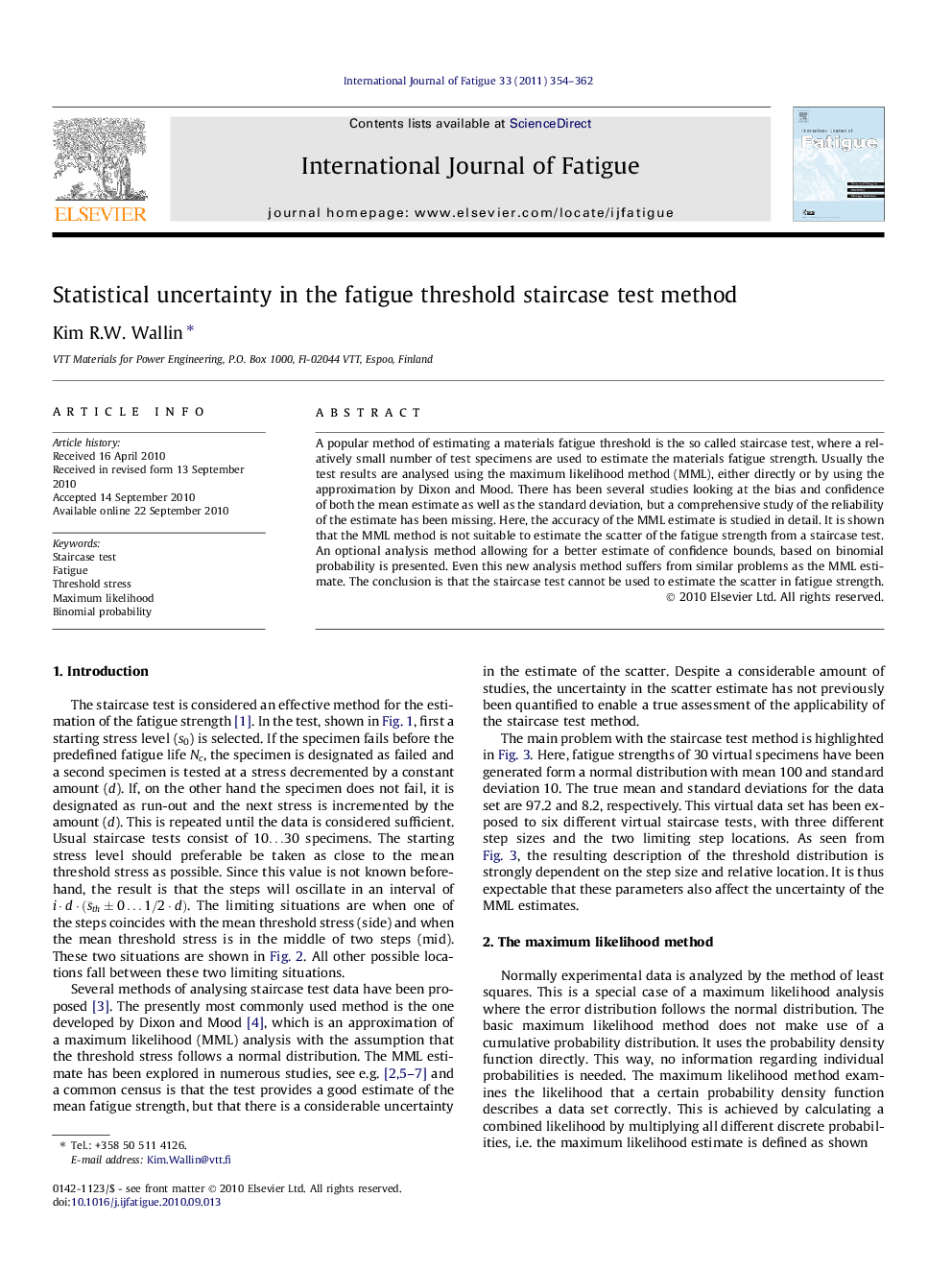| Article ID | Journal | Published Year | Pages | File Type |
|---|---|---|---|---|
| 775492 | International Journal of Fatigue | 2011 | 9 Pages |
A popular method of estimating a materials fatigue threshold is the so called staircase test, where a relatively small number of test specimens are used to estimate the materials fatigue strength. Usually the test results are analysed using the maximum likelihood method (MML), either directly or by using the approximation by Dixon and Mood. There has been several studies looking at the bias and confidence of both the mean estimate as well as the standard deviation, but a comprehensive study of the reliability of the estimate has been missing. Here, the accuracy of the MML estimate is studied in detail. It is shown that the MML method is not suitable to estimate the scatter of the fatigue strength from a staircase test. An optional analysis method allowing for a better estimate of confidence bounds, based on binomial probability is presented. Even this new analysis method suffers from similar problems as the MML estimate. The conclusion is that the staircase test cannot be used to estimate the scatter in fatigue strength.
